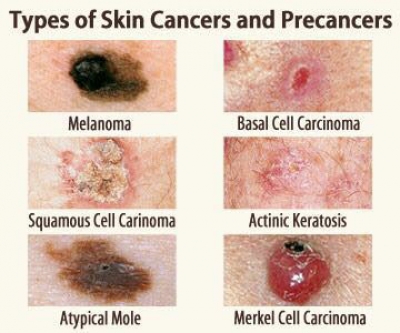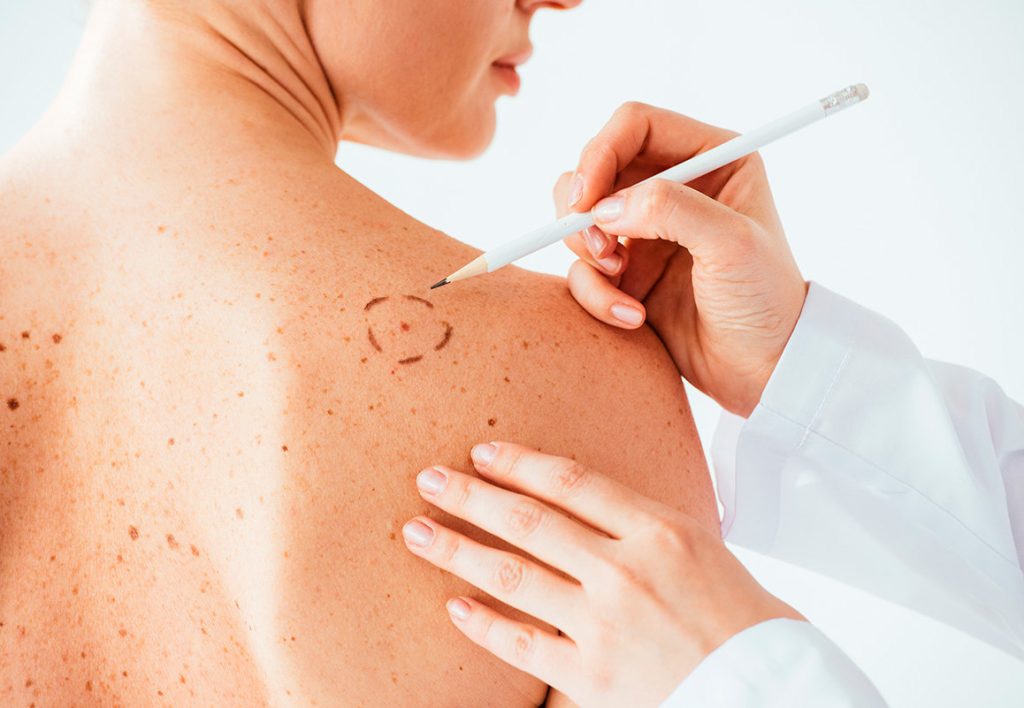Skin Cancer

Skin cancer is a type of cancer that originates in the skin cells. It is one of the most common types of cancer globally, and it usually develops due to abnormal growth of skin cells. Skin cancer can be classified into three main types: basal cell carcinoma (BCC), squamous cell carcinoma (SCC), and melanoma, which is the most dangerous form. BCC and SCC are more common and are typically less aggressive, while melanoma, although less common, can spread quickly to other parts of the body and can be life-threatening. Skin cancer is largely caused by excessive exposure to ultraviolet (UV) radiation from the sun or tanning beds, which damages the DNA in skin cells, leading to mutations that cause cancer.

treatment
The treatment of skin cancer here at Aesthetic Dermatology generally begins with an initial examination, where the doctor will inspect the skin for any suspicious moles, spots, or growths. We may use a dermatoscope to closely examine the skin’s surface. If a suspicious lesion is found, we will likely perform a biopsy by removing a small sample of the tissue to analyze it for cancer cells. In cases where skin cancer is diagnosed, the specific type and stage of the cancer will determine the treatment plan.
basal cell carcinoma and squamous cell carcinoma
For basal cell carcinoma and squamous cell carcinoma, treatment options often include surgical excision, where the tumor is removed along with a margin of healthy tissue to ensure all cancerous cells are gone. Another treatment option is Mohs surgery, which is a precise technique that involves removing the tumor layer by layer and examining each layer under a microscope until no cancerous cells remain. This method is particularly effective for skin cancers on areas like the face, where preserving healthy tissue is important.

Melanoma treatment
Melanoma treatment typically involves more aggressive approaches because it can spread rapidly. Surgical excision is still the primary treatment, but melanoma may also require additional treatments such as immunotherapy or targeted therapy. Immunotherapy boosts the body’s immune system to recognize and fight cancer cells, while targeted therapy involves drugs that target specific molecules involved in the growth of the cancer. In more advanced cases of melanoma, chemotherapy or radiation therapy may be used to manage the cancer.


follow up
After treatment, we will often recommend regular follow-up appointments to monitor the skin for any signs of recurrence. Since skin cancer can reoccur or develop in other areas, regular self-exams and dermatological check-ups are essential for early detection. Prevention is also a key aspect of managing skin cancer risk, and we would advise using sun protection, wearing protective clothing, and avoiding tanning beds to reduce exposure to harmful UV rays. Early detection and treatment of skin cancer are crucial for a positive prognosis, especially for melanoma, which can be deadly if not treated promptly.
Improved Skin Texture
Improved Skin Tone and Clarity
Combatting Acne and Blackheads
Boosting Collagen Production
Minimal Downtime and Quick Results
Get in Touch
Do Not Hesitate




